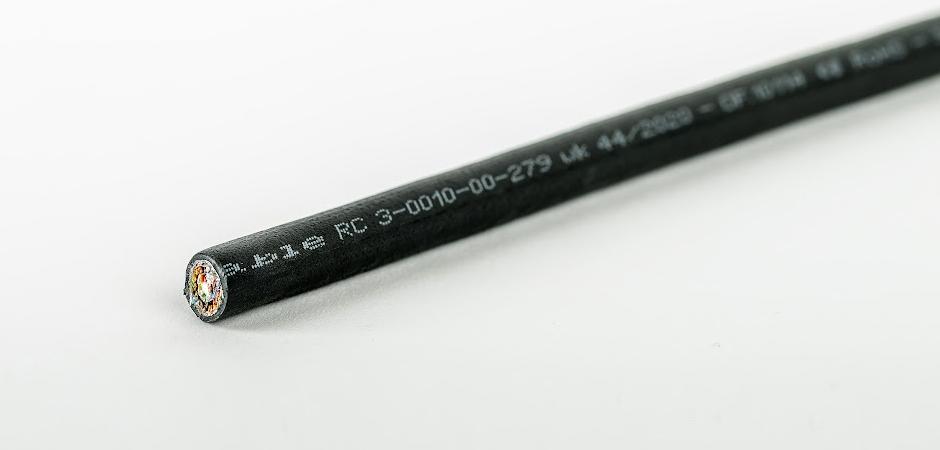
Sumcab develops and manufactures industrial cables for different types of sectors. Consult the cable section on Sumcab's website to see the extensive range of cabling the company offers.
Each cable type has a technical data sheet, detailing all of its specifications.
Another way to find the optimal industrial cables for your sector is to visit the Markets. section. Within this section, you'll see the different industries in which SUMCAB works. You can check whether the applications are similar to those your company needs.
This search is very useful when you know the specific cable or cable types required for a project. For further information, you can request personalised advice from Sumcab's professionals to assist you in selecting the cables that best meet your requirements.
Since you'll need to be able to interpret the specifications of each one, it is essential to understand the naming conventions for the different types of cables.
What are the naming conventions for cables?
The naming conventions for cables can be seen in the alphanumeric labels that are printed on them.
Each set of letters and numbers has a specific meaning related to the product's specifications, so that you can understand the features of each cable. It helps to select the appropriate cables for each project based on the specifications that are required.
Cable naming conventions must always be present on the cables.
The meaning of cable naming conventions
The meaning of each naming convention can be quite easy to understand in general, because each cable has different specifications.
A practical example can be seen in identifying cable insulation. While a product with cross-linked polyethylene (XLPE) can be simply identified by the "R," in reality, a cable that includes "RH" in its naming convention identifies that the insulation is XLPE and also has a radial field, with triple extrusion and internal and external semi-conductor layers.
Cable naming conventions and their specifications can be quite complex.
The fields in which cable naming conventions are divided can therefore be identified in order to understand what they refer to in each case:
- The commercial name of the cable range provided by the manufacturing company.
- Reference to cable coatings, primarily in relation to insulation.
- Properties of the outer sheath.
- Properties of the lengthwise seal.
- The cable's safety level.
- Rated voltage type.
- Conductor section.
- Conductor type.
- Screen type.
- The regulations based on which the cable is manufactured.
- The marking that indicates that the product is compliant with regulations.
- Manufacture date.
- Marking metre by metre.
Meaning of low-voltage cable naming conventions
Focusing on low-voltage industrial cables 0.6/1kV, the meaning of each set of letters and/or numbers present in each model is:
Insulation naming conventions for cables
- R - Cross-linked Polyethylene (XLPE).
- Z1 - Halogen-free thermoplastic polyolefin.
- Z - Halogen-free thermoset elastomer.
- V - Polyvinyl chloride (PVC).
- S - Halogen-free silicone thermosetting compound.
- D - Ethylene-Propylene Rubber (EPR).
Screen naming conventions.
- H - Individual aluminium tape screen + Drain, over each pair, triplet, quad, etc.
- C3 - Copper wire screen in a helical arrangement.
- C4 - Copper screen in the form of a braid, over insulated and gathered conductors.
- K - Copper strip screen, taped in a helical arrangement.
Inner sheath or seating naming convention.
- V - Polyvinyl chloride (PVC).
- Z1 - Halogen-free thermoplastic polyolefin.
Naming conventions for different types of cable armouring
- F - Steel strip in a helical arrangement.
- FA - Aluminium strip in a helical arrangement.
- FA3 - Aluminium strip with lengthwise corrugation.
- M - Core of steel wires.
- MA - Core of aluminium wires.
- Z5 - Galvanised steel wire braid.
Naming conventions for cable outer sheaths
- V - Polyvinyl chloride (PVC).
- Z1 - Halogen-free thermoplastic polyolefin.
- Z - Halogen-free thermoset elastomer.
- N - Vulcanised chlorinated polymer.
- E - Polyethylene.
Naming convention for conductor flexibility
- K - Flexible copper, Class 5 for fixed installations.
- F - Flexible copper, Class 5 for mobile services.
- R - Semi-rigid copper, Class 2
- U - Rigid solid wires, Class 1
Naming convention for applicable regulations
- UNE 21123.
- IEC 60502.
- UNE 21150.
Outer sheath specifications:
- RH - Cable with hydrocarbon resistance
- FB - Fire retardant cable
- BH - Low halogen emission cable
- UV - Cable resistant to ultraviolet rays
- AR - Cable with rodent protection
- AT - Cable with termite protection
Other naming conventions
- Rated voltage.
- Number and section of the conductors (by colour).
- Mandatory markings such as "CE" for marketing cables in the European Community.
- Manufacture date.
In addition to cable naming conventions, Sumcab recommends reviewing the technical data sheet for each product to check that all the specifications meet your installation requirements.
Please contact Sumcab to receive professional advice on choosing the cable type that best suits your project or company, with the correct features to meet your requirements.

